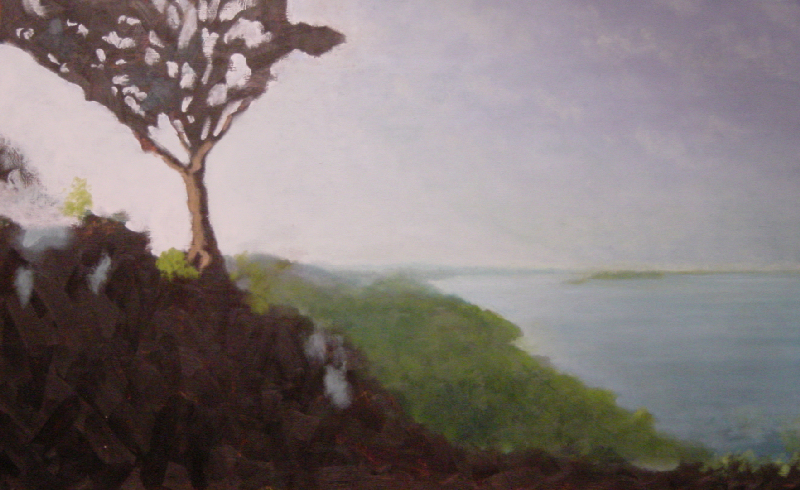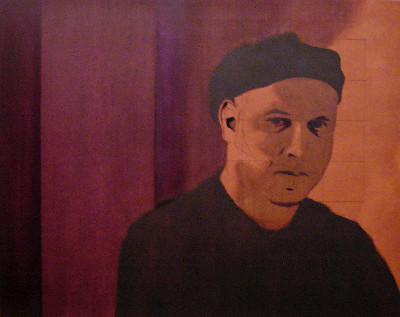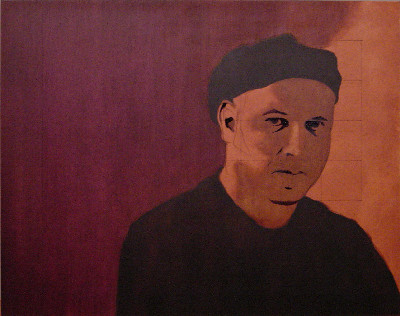
Untitled, 34" x 21", oil on panel (in progress)
While waiting for the latest layers to dry on my self-portrait, I decided to go back to my landscape. The first thing I did was to paint over the small group of trees extending into the water on the right side. I really needed to re-establish the gradual progression of the water, and these trees were in the way. Now, I liked them quite a bit, but I was warned a long time ago about falling in love with a small part of a painting and trying to hold onto it to the detriment of everything else. Besides, I can just paint them in again later.
I also painted over the buildings and roads I had begun in the center. I plan to put the town back in, but instead of building up vegitation around the structures, I'm going to cut the city into the forest. I think this is a better approach, similar to painting trees. Instead of building up to the shape you want, you cut down to the shape you want. Why do I think this works better? I wish I knew. It just seems to be the case. Perhaps it looks less calculated because you're focusing on the negative space (what's not there) and so what remains appears more natural. Regardless, that's my plan. We'll see if it works.
It probably appears that I am backtracking. I think preventing yourself from backing up is a hazard though. Rushing to the finish, in anything, tends to achieve a product that doesn't stand up upon examination. It lacks the proper foundation time would have afforded it. I find painting to be an exercise in patience, among other virtues.


